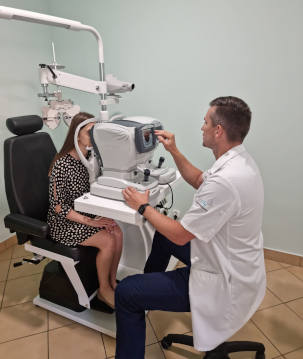
Does the convalescence period after a laser vision correction procedure look the same for every patient? |
| 04-08-2022 |
 Before candidates for laser vision correction decide to undergo the surgery, they often search for information about the procedure online or ask those who have already had it.
Before candidates for laser vision correction decide to undergo the surgery, they often search for information about the procedure online or ask those who have already had it.
However, you should not anticipate any particular ailments reported by other patients following the surgery. A lot of various factors affect the convalescence period, which results in diverse results, individual for every patient. Everyone experiences them differently, and the dissimilarities are not necessarily abnormalities.
The correction method is the first factor that affects the course of the convalescence period. What is meant by the word „method” is the way in which the cornea is prepared for the work of a laser. The methods can be divided into surface ones and the ones which involve creating a corneal flap or a microlens. Each method produces the same final result but gives different subjective experiences directly after the procedure.
This means that patients who have the same refractive error and are the same age but have undergone the procedure performed with the use of different methods will experience different ailments. The factors which determine the choice of the method include the thickness of the cornea, its shape and curvature as well as the lifestyle the patient lives – e.g. in sportspeople and those working in the uniformed services the surgery is performed using the surface method due to proneness to injuries.
In our clinic, ophthalmic surgeons use the following methods:
Vision stabilisation, until the results predicted at the qualifying examination are achieved, takes up to six months. Patients with higher values of the refractive error and astigmatism need slightly more time to obtain the desirable effects than those with milder vision defects.
Following far-sightedness correction (plus lenses), patients experience vision improvement in a completely different way than those who were short-sighted (minus lenses). When you have short-sightedness corrected, you can expect the time needed for your eyesight to adapt to close-range vision – full adaptation may take approximately up to a month.
Each patient will experience the convalescence period differently, even though they may have the same refractive error or be qualified for the same correction method. The reason for this is that what also affects the convalescence period is the individual features of the patients, such as: